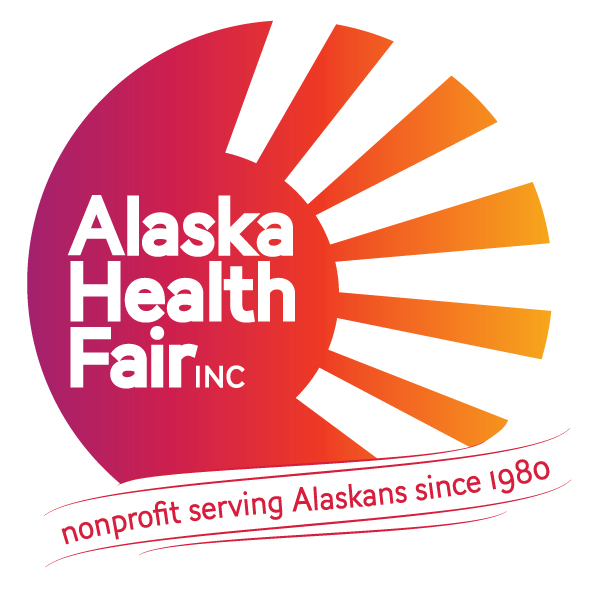Every year, thousands of Alaskans take their first steps toward a healthier, tobacco-free life. As the newest data reveals, it’s a journey many of our neighbors, friends, and family members are ready to begin – and Alaska Health Fair is here to help support that journey every step of the way.
A Growing Concern Across the Last Frontier
The recently published Alaska Tobacco Facts, 2024 Update from Alaska’s Tobacco Prevention and Control Program reveals some eye-opening statistics about tobacco use in our state. Over 144,000 Alaskans – our neighbors, friends, colleagues, and family members – are currently at risk for poor health outcomes due to tobacco or nicotine product use.
While there’s been progress with adult cigarette smoking decreasing statewide over the past decade (from 27% in 1997 to 16% in 2022), many Alaskans still struggle with tobacco addiction. Particularly concerning is that smokeless tobacco use remains high in Alaska at 6%, triple the national average of 2%.
For our youth, the landscape of tobacco use has shifted dramatically. E-cigarettes (vapes) have become the most commonly used tobacco product among high school students, with 17% reporting current use and 38% having tried vaping at least once. Most alarming is that many Alaska Native students are less likely to perceive the risks of daily vaping compared to their peers.
The Healing Timeline: What Happens When You Quit
The journey to becoming tobacco-free brings almost immediate health benefits. Your body begins healing within minutes of your last cigarette:
Within 20 minutes: Your heart rate and blood pressure begin to drop toward normal levels, and circulation starts to improve, especially to your hands and feet.
After 12 hours: Carbon monoxide levels in your blood drop to normal, allowing your blood to carry more oxygen throughout your body.
Within 24 hours: Your risk of heart attack begins to decrease as your cardiovascular system starts to recover.
After 2-3 days: Your sense of taste and smell begin to improve as nerve endings start to regenerate, and breathing becomes easier as bronchial tubes relax.
Between 1-9 months: Coughing and shortness of breath decrease, and your lung function increases by up to 10%.
After 1 year: Your risk of coronary heart disease drops to half that of someone who continues to smoke.
After 5-15 years: Your risk of stroke and various cancers continues to decrease, eventually approaching that of someone who has never smoked.
Taking That First Step: Alaska’s Resources for Quitting
If you’re ready to quit, Alaska offers several valuable resources to support your journey:
Alaska’s Tobacco Quit Line (1-800-QUIT-NOW): Available 24/7, the Quit Line provides free coaching, support, and resources to help you create a personalized quit plan. Services include counseling, nicotine replacement therapy, and ongoing encouragement.
Alaska Native Tribal Health Consortium (ANTHC): Offers culturally relevant tobacco cessation programs specifically designed to support Alaska Native people. Their trained specialists provide personalized coaching and resources.
Alaska Department of Health Tobacco Prevention and Control Program: Works throughout the state to provide education, resources, and policy support to reduce tobacco use and help Alaskans quit.
Healthcare providers: Many healthcare facilities across Alaska offer tobacco cessation counseling and medication. Talk to your provider about options available to you.
Alaska Health Fair: Your Partner in Tobacco-Free Living
Since 1980, Alaska Health Fair has been committed to promoting health education and preventative screenings throughout our state. At every health fair we organize – from Anchorage to remote villages – we bring critical tobacco education resources directly to Alaskans.
Our health fairs provide:
- Free educational materials about tobacco risks and cessation strategies
- Connections to local and statewide quit resources
- Blood testing that can help monitor health improvements as you quit
- Access to healthcare professionals who can answer your questions about quitting
- A supportive, community-based environment to begin your health journey
When you attend an Alaska Health Fair event in your community, be sure to visit our tobacco education booth. Our volunteers can guide you to the resources you need and answer questions about the quitting process. Please call our toll-free voicemail box at 1-833-800-1292. An AHF Health Educator & RN will return your call and address your questions. Whether you’re just considering quitting or actively working toward a tobacco-free life, we’re here to support you.
The Community Impact
Quitting tobacco doesn’t just benefit individual health – it strengthens our entire Alaskan community. Every successful quit attempt reduces healthcare costs, decreases secondhand smoke exposure, and creates positive role models for our youth.
The fact that over half (53%) of Alaska adults who smoke have tried to quit shows a strong desire for change in our communities. With the right support, more of these attempts can lead to long-term success.
Ready to take the first step? Visit Alaska Health Fair’s website to find upcoming health fairs in your area, or call Alaska’s Tobacco Quit Line at 1-800-QUIT-NOW (1-800-784-8669) today. Your journey to better health can begin right now – and the benefits start in just 20 minutes.
Tobacco Facts 2024 Report by Alaska Tobacco Prevention and Control Program – follow this link to download the report in Portable Digital Format (PDF).

